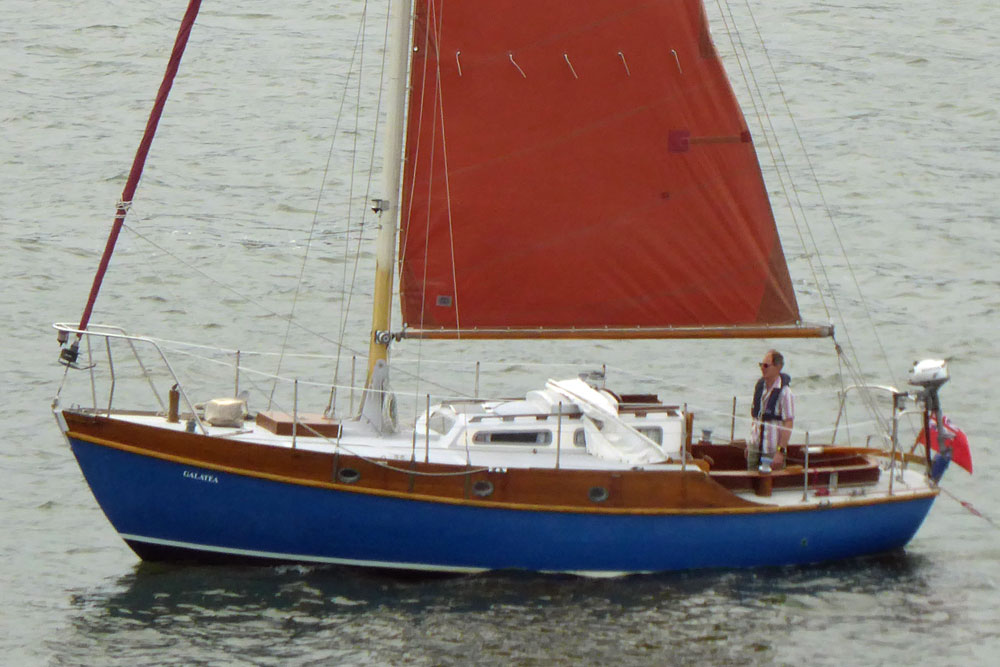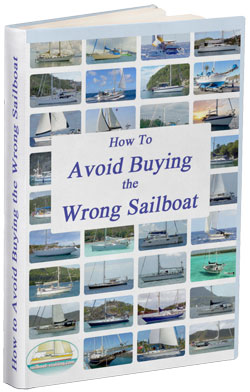- Home
- Cruiser Yachts under 30'
- Rossiter Pintail
The Rossiter Pintail Sailboat
Specs & Key Performance Indicators
The Rossiter Pintail, a heavy displacement fractionally rigged sloop, was designed by Hugh Rossiter and built in the UK by Rossiter Yachts Ltd.
 A Rossiter Pintail
A Rossiter PintailPublished Specification for the Rossiter Pintail
Underwater Profile: Shallow long fin with bilge keels
Hull Material: Wood/Fibreglass*
Length Overall: 27'3" (8.3m)
Waterline Length: 23'0" (7.0m)
Beam: 8'9" (2.7m)
Draft: 3'6" (1.1m)
Rig Type: Fractional sloop
Displacement: 11,650lb (5,28kg)
Designer: Hugh Rossiter
Builder: Rossiter Yachts Ltd (UK)
Year First Built: 1962
* Initially built with a wooden planked hull, this version was discontinued in 1970 from when fibreglass hulls became the norm.
Published Design Ratios for the Rossiter Pintail
1. Sail Area/Displacement Ratio: 9.7
2. Ballast/Displacement Ratio: 40.3
3. Displacement/Length Ratio: 427
4. Comfort Ratio: 41
5. Capsize Screening Formula: 1.6
Summary Analysis of the Design Ratios for the Rossiter Pintail
The Rossiter Pintail sailboat has an interesting blend of design ratios, which suggest a particular mix of strengths and weaknesses.
- Starting with the Sail Area/Displacement (SA/D) Ratio, the figure of 9.7 suggests the Pintail is somewhat under-powered. This ratio is a measure of how much power the sails can provide relative to how much weight they need to move. With a low to average ratio, this boat might struggle in light wind conditions or when trying to maintain speed in heavy wind.
- The Ballast/Displacement Ratio of 40.3 indicates a relatively high proportion of the sailboat’s weight is concentrated in the keel. This generally translates to increased stability. The boat can thus handle a higher degree of heel before flipping, making it suitable for cruising.
- The high Displacement/Length Ratio of 427 is associated with a slower, heavier boat. Yet, it also signifies a steady, forgiving ride, again leaning this model towards cruising rather than racing.
- With a Comfort Ratio of 41, the Pintail should be comfortable for longer passages. This ratio signifies how 'comfortable' a yacht's motion will be at sea, with a higher number suggesting a smoother ride. Thus, it is another factor that makes the Pintail suitable for casual cruising ventures.
- Lastly, the Capsize Screening Formula result of 1.6 falls within the general ‘good to go’ range, as it's below 2. Anything below 2 is generally deemed safe enough for offshore sailing, indicating a relatively low risk of capsize.
In summary, the Rossiter Pintail sailboat, considering these ratios, seems best suited for cruising rather than racing. It might not thrive in light winds or perform optimally at high speed due to insufficient sail power and high displacement. However, its sturdy build and high comfort ratio make it a potential choice for those who prioritize safety, stability, and comfort for longer passages over speed.
.........................
I wrote this article using GPT-4, OpenAI’s large-scale language-generation model, as a research assistant to gather information, summarize research findings, and provide suggestions for the content and structure of the article.
Dick McClary, creator and owner of sailboat-cruising.com
.........................
Recent Articles
-
Passoa 47 Sailboat Review: Comprehensive Specs & Performance Analysis
Jan 04, 26 04:57 AM
Discover the Passoa 47, a legendary aluminium blue water cruiser by Garcia. Explore technical specifications, design ratios, and why its lifting keel is a game-changer for offshore sailors. -
Sailboat Wheel Steering Maintenance & Inspection Checklist
Dec 30, 25 02:32 PM
Keep your vessel’s helm responsive and reliable with our expert maintenance checklist. Master cable tensioning and system inspections to avoid mid-passage failures. -
Modern Boat Electronics and the Latest Marine Instruments
Dec 20, 25 05:27 PM
Should sailboat instruments be linked to the latest boat electronics as a fully integrated system, or is it best to leave them as independent units?













